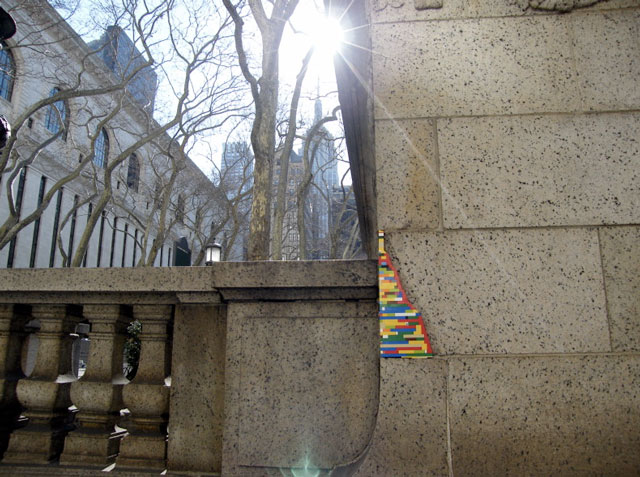This post is the first of hopefully many as a participant in the “Collaborative Curiosity: Designing Community-Engaged Research” online connective learning course sponsored by the Division of Community Engagement at VCU. (I will affix the same category—CuriousCoLab—to subsequent posts for the course. The #CuriousCoLab tag is also being used in Twitter conversations among participants.)

“Jan Vormann travels the world repairing crumbling monuments with Lego,” Lego fills up the cracks in the walls of Yaffo in Tel Aviv, Israel, during 2008, telegraph.co.uk

“Filling In City Holes With Legos,” New York City, Gothamist
When I came across the fascinating documentation of “Lego infills” done by Jan Vormann, I didn’t immediately see these images as a representation of community. I remembered them, though, when trying to come up with a visual metaphor for the term, knowing that I wanted to emphasize community as a construction. It may be tempting to think of the way we organize ourselves as the result of a natural, organic process. But community is as much something that we consciously build in order to satisfy mutual needs (here I mean the walls to be associated with shelter and structure, not segregation).
The Lego infills illustrate that what we collectively construct we often need to repair. These plastic bricks are crude yet creative and colorful ways of completing intentions that suffered some loss along the way. So often we know what sustaining structures we want in place but struggle to maintain that unity. (The tiny plastic bricks, as opposed to uniform brick and mortar, appear more adept at filling the gaps that might develop over time. Both are necessary and reinforce one another.)
Significantly, these Lego infills don’t restore an original but instead preserve historical traces and mark the present conversing with the past. I believe it’s important to recognize the additions to existing and previous community structures to understand what is possible in the future. Communities aren’t seamless, so why not acknowledge their composite nature?



No comments yet.
Add your comment